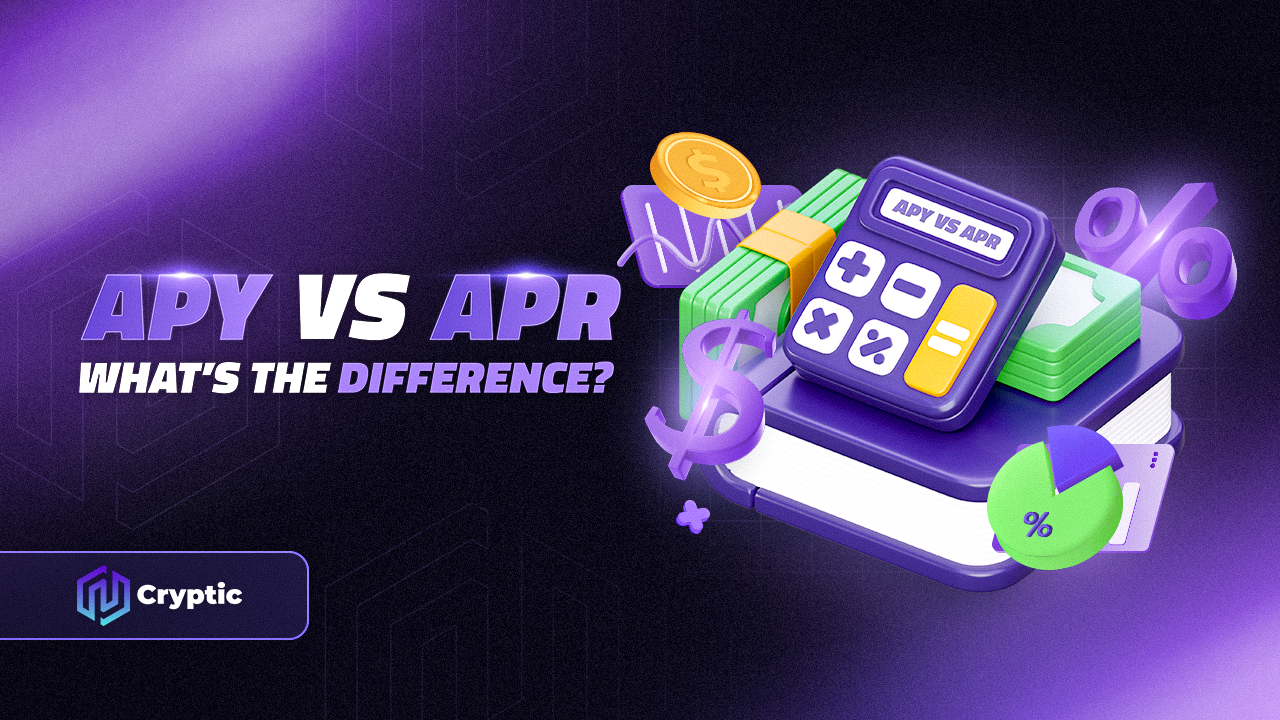
In the dynamic world of cryptocurrency, where opportunities for earning abound, understanding the difference between Annual Percentage Rate (APR) and Annual Percentage Yield (APY) is crucial for making informed financial decisions.
While both terms represent interest rates, they are calculated differently and can significantly impact your returns, especially over the long term.
APR (Annual Percentage Rate)
APR is the basic interest rate charged on a loan or earned on an investment over a year. It does not take into account the effect of compounding, which is the process of earning interest on both your principal and any accumulated interest.
In the crypto space, APR is often used in the context of lending platforms, where you can earn interest by lending your crypto assets to borrowers. It’s also relevant in decentralized finance (DeFi) protocols where you might stake your tokens to earn rewards.
APY (Annual Percentage Yield)
APY, on the other hand, considers the impact of compounding. It reflects the total amount of interest you’ll earn on your investment over a year, assuming that all earned interest is reinvested.
In the crypto world, APY is frequently associated with yield farming, staking, and other DeFi activities where rewards are distributed regularly. The more frequently the interest is compounded, the higher the APY will be compared to the APR.
The Key Difference
The primary distinction between APR and APY lies in their treatment of compounding. APR is a simple interest rate, whereas APY incorporates the snowball effect of compound interest. This means that for the same nominal interest rate, the APY will always be higher than the APR, especially over longer periods.
Why It Matters
Understanding the difference between APR and APY empowers you to accurately assess the potential returns on your crypto investments. While APR gives you a basic idea of the interest rate, APY provides a more realistic picture of your earnings, particularly in scenarios where compounding plays a significant role.
Choosing Wisely
When comparing different crypto investment opportunities, it’s essential to consider both APR and APY, especially if you plan to hold your assets for an extended period. If compounding is involved, prioritize APY as it reflects your actual returns. However, if the investment horizon is short or there’s no compounding, APR might be a more relevant metric.
Conclusion
In the fast-paced world of crypto, where opportunities for earning interest and rewards are plentiful, understanding the nuances between APR and APY is essential. By grasping the key differences and knowing when to prioritize each metric, you can make informed decisions and maximize your returns in the exciting world of decentralized finance. Remember, knowledge is power, especially when it comes to navigating the complex world of crypto investments.


